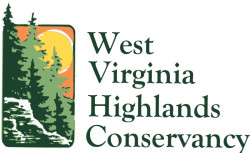By Larry Thomas
Old-Growth Forest in West Virginia
To the untrained eye it is a group of really big trees, but to Doug Wood, a retired Department of Environmental Protection water-quality official, who is helping spearhead an effort to identify old-growth tracts, particularly on public lands,it represents another potential stand of old-growth forest here in West Virginia. Perhaps you remember the articles that dominated the February and March issues of the Voice concerning the Governor’s decision to log in the West Virginia State Parks and the tremendous public outcry generated by that decision.
In an article in the Charleston Gazette Mail by John McCoy on July 26 titled “WV Has More Old-Growth Forest Than Once Thought. Group Believes”, Doug states that he believes there are more old-growth stands scattered throughout the state, perhaps many more.The decision by the Governor generated a grass roots effort, headed by Doug, to identify and protect old-growth stands found within West Virginia State Parks.
During the interview Doug says, “Based on criteria established by the U.S. Forest Service, there are plenty of places in West Virginia that qualify as secondary old-growth forest, where the forest has grown back up after being logged,” he said. “Several areas of secondary old growth have already been identified, and I’m convinced that more will be found.
So far, we’ve found tracts on several pieces of public land that have old-growth characteristics,” he continued. “Here in Kanawha State Forest, but also in Watoga, Cedar Creek, Twin Falls, Cacapon, North Bend, Holly River and Beech Fork state parks.
Those of us who enjoy our state parks, and walking among these big trees, were worried that we might see some of these trees felled,” Wood said. “So we began to look for a way to help other people to gain an appreciation for how many of our parks contain old-growth areas.”
When Doug finds a potential tract, he notifies The Old Growth Network. http://www.oldgrowthforest.net/“ The Old Growth Network is a non-profit group interested in helping designate old-growth areas,” Doug explains. “They like the effort to be driven by the local citizenry, so they have county coordinators to help get citizens interested in identifying old-growth tracts.”
At a recent presentation on how to identify old-growth forest Doug explained the methods that he uses to identify potential stands which include, scattered, dominant canopy trees greater than 20 inches in diameter at breast height; trees with “stag-headed” crowns that have nearly horizontal branches; nearby trees of varying heights and ages; a lack of shade-intolerant species, except in canopy gaps; large logs on the forest floor; scattered, large dying trees and standing dead snags; small canopy gaps created by dead or fallen trees; few, if any, cut stumps; few, if any, visible signs of logging roads or skid trails; 100-percent ground cover by leaf litter; and the presence of wildlife species that are mature-forest specialists.
As you hike through our West Virginia public lands, keep an eye peeled for a tract of potential old-growth forest. If you find a candidate, please contact me at larryvthomas@aol.comand we will do the research to determine if the tract can be added to those already found.
The article that I have quoted from can be found at: https://www.wvgazettemail.com/outdoors/wv-has-more-old-growth-forest-than-once-thought-group/article_cd132b2e-f3af-5385-b1f9-7180f95ee4c8.html
